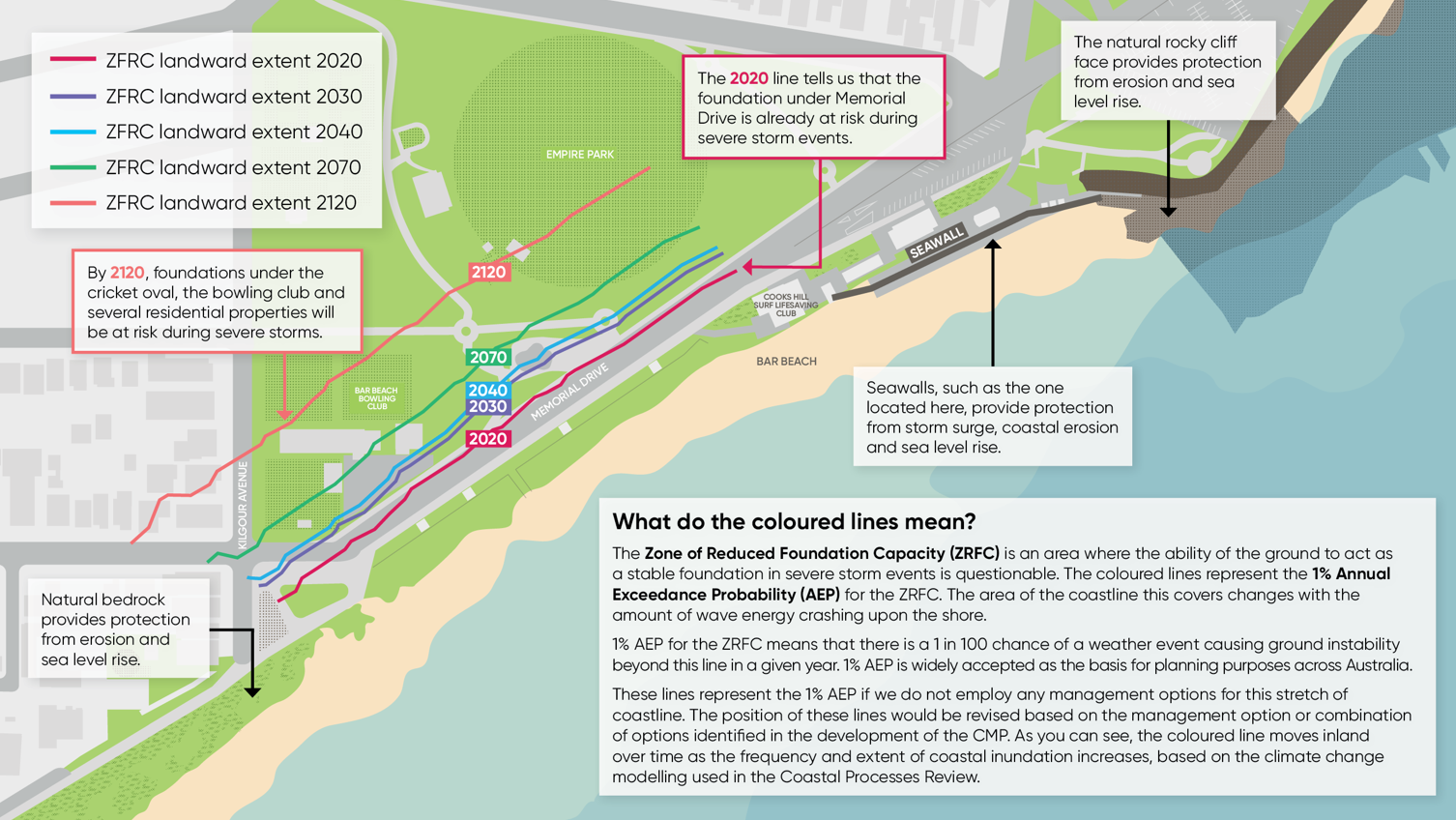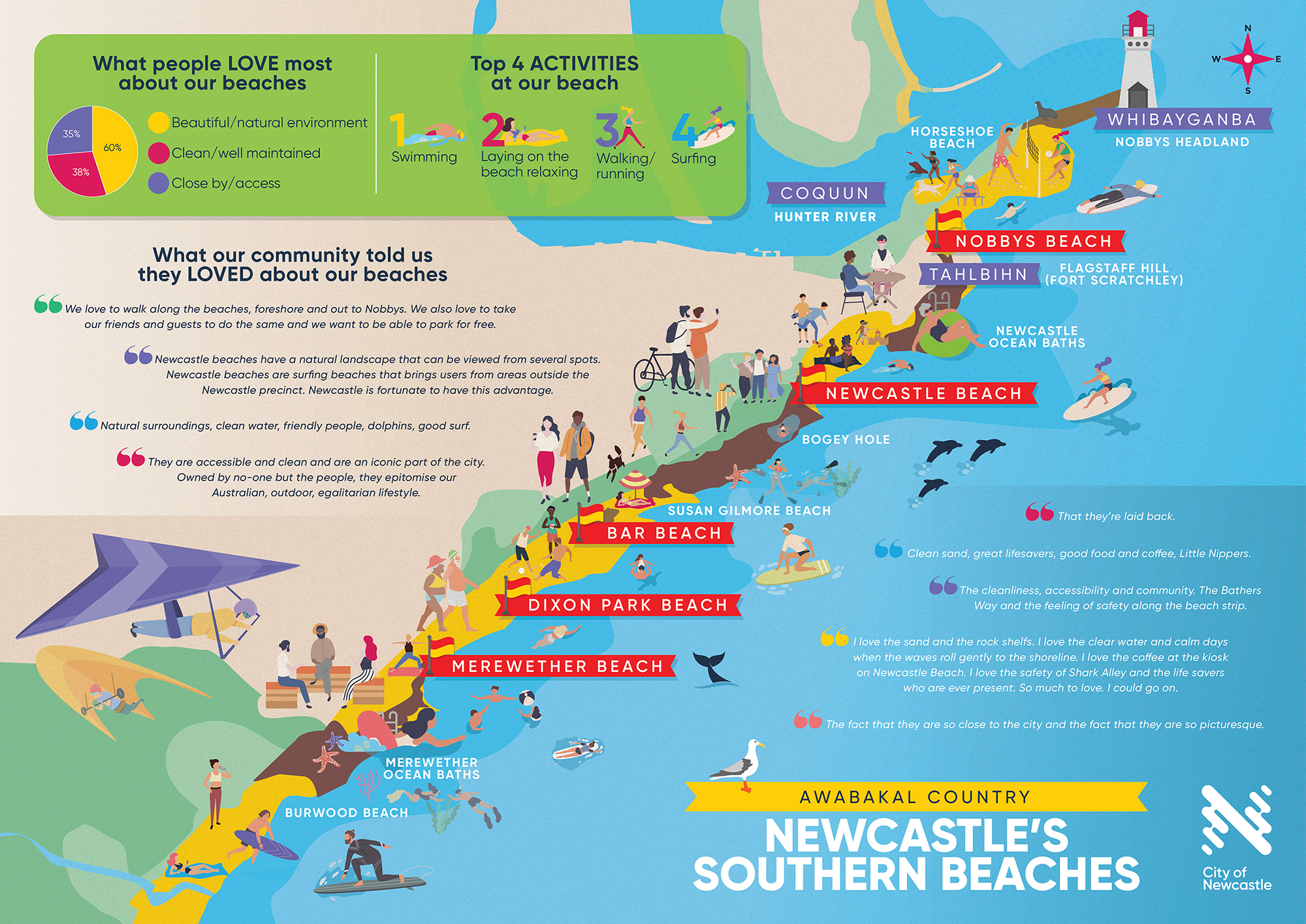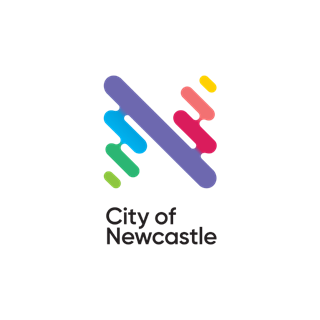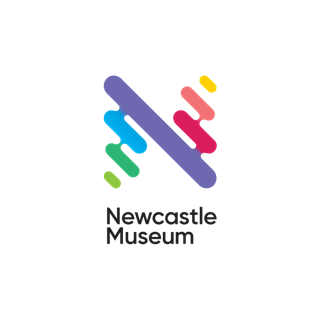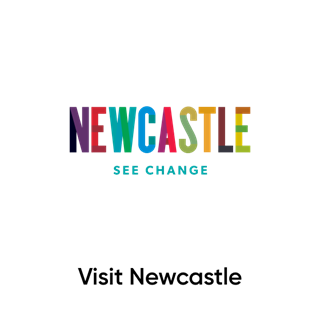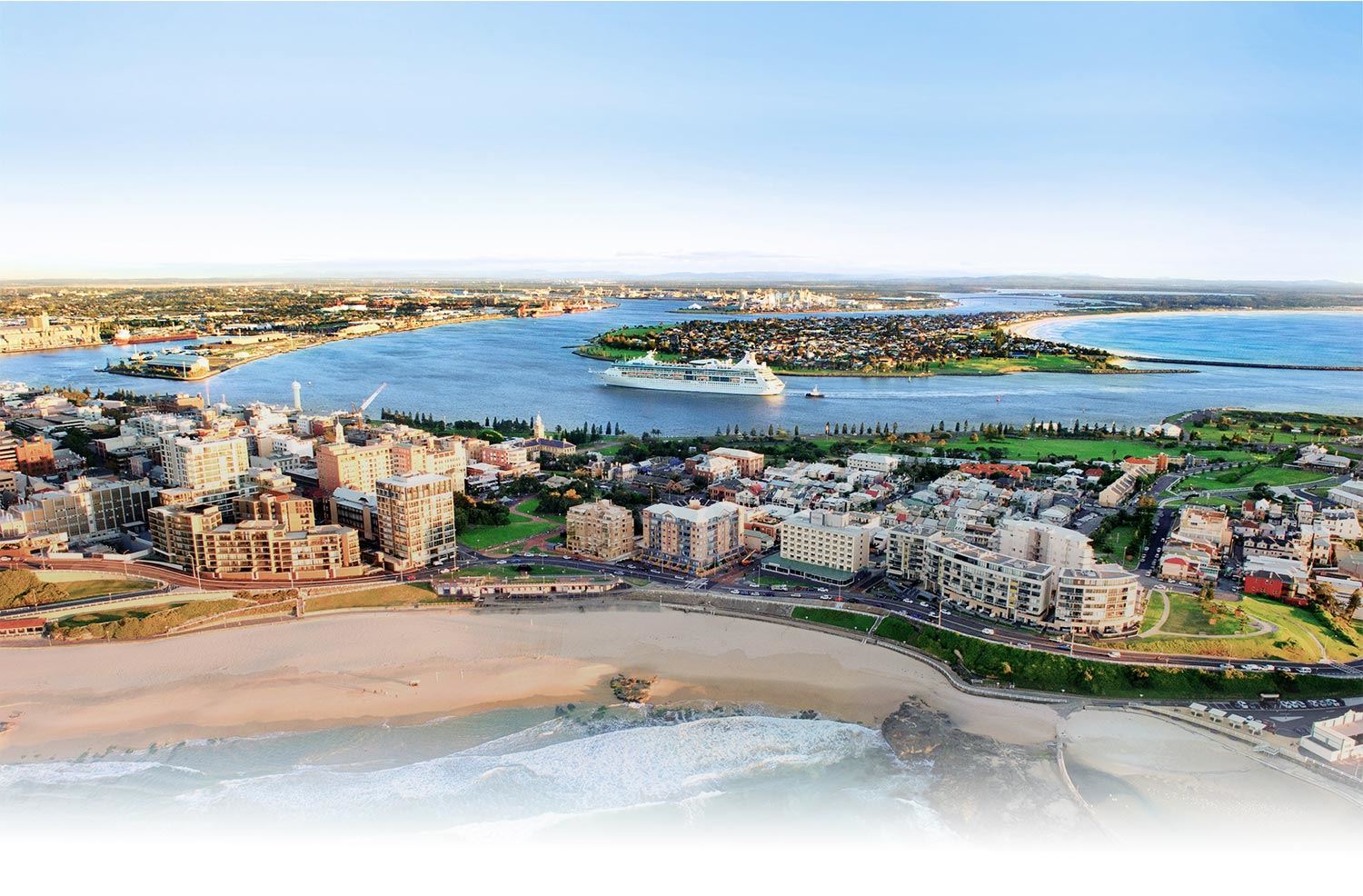
Southern Beaches Coastal Management Program
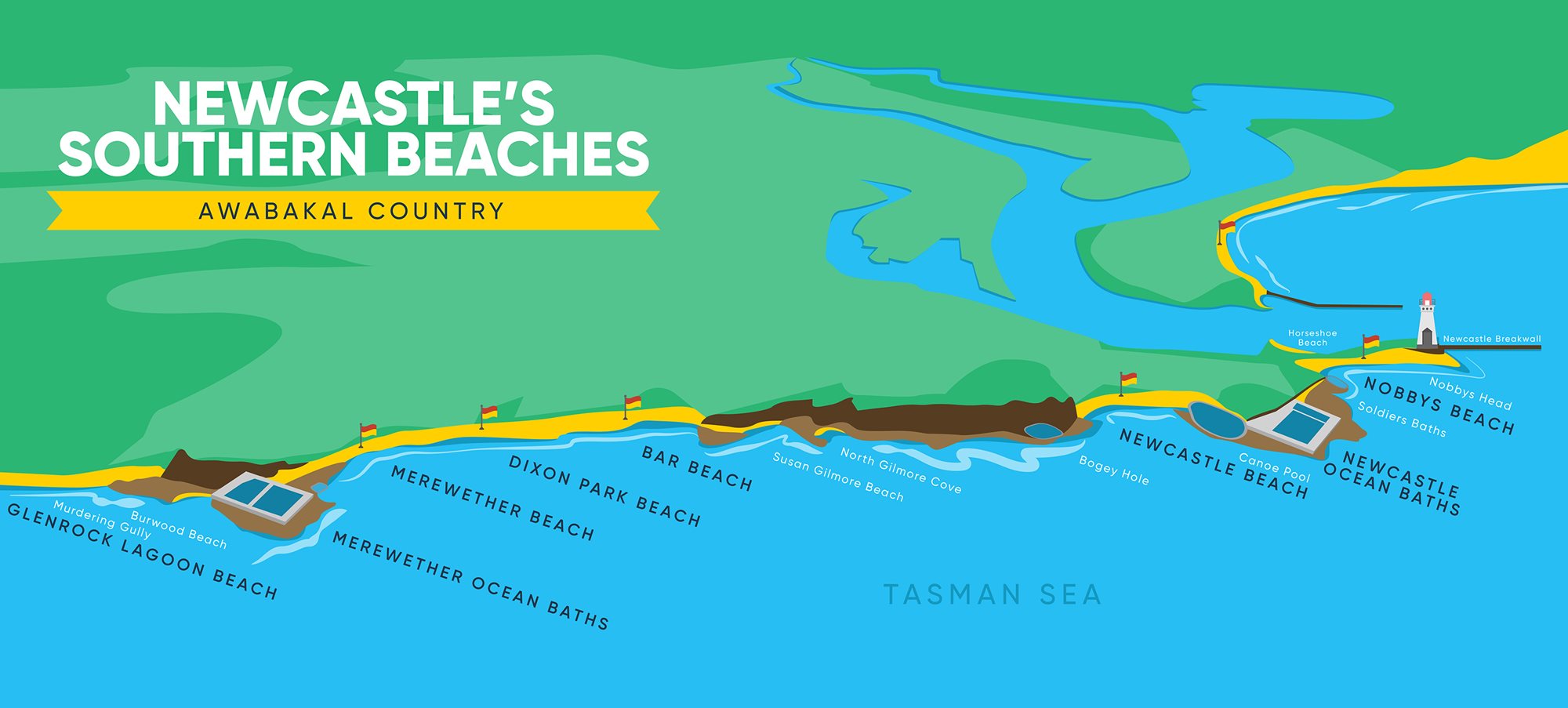
We are in the process of developing the Southern Beaches Coastal Management Program (CMP) which covers the coastline from Nobbys Headland to Glenrock Lagoon. This Coastal Management Program will contain a series of actions to help us adapt to both immediate and future changes on our coast.
The NSW Government's Coastal Management Framework includes the NSW Coastal Management Manual which prescribes a five-stage risk management process for the preparation and implementation of a CMP. The Southern Beaches CMP is currently at Stage 3 of this process, "Identify and evaluate options".
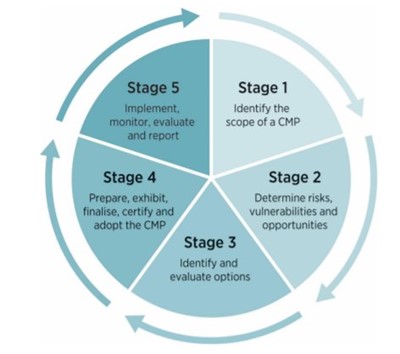
What do we know about the risks, vulnerabilities and opportunities for the Southern Beaches?
Building on studies undertaken and plans developed in the past, we engaged coastal specialists Royal Haskoning DHV to undertake a Coastal Processes Review.
This review told us that unprotected areas are at risk sooner than previously thought. The area most at risk is the currently unprotected section of coastline from the Cooks Hill Surf Life Saving Club at Bar Beach, south to the cliffline at Dixon Park. Along this stretch there is no natural cliffline or man-made structure in place. The image below shows the area at risk. For a larger version of this image, view the PDF.
How does the coastline in this area work?
Understanding how our coastline works is an important part of planning ahead for our beaches. This video takes a look at the coastal processes that occur at the stretch of coastline from Merewether to Bar Beach.
How might the way I visit and use these beaches change in the future?
We know that both locals and visitors highly value these beaches. In early 2021 we asked the community to share their views through the Love Our Coast survey.
You told us that you love swimming, relaxing on the sand, walking or running along the coastline, and surfing - as well as a range of other activities shown below (view larger version as PDF).
Your ability to continue these activities for years to come will depend on the frequency and intensity of the weather events we experience, and the implementation of coastal management actions to minimise the risk of damage.
It is these actions that we are investigating closely in Stage 3 of the CMP - "Identify and evaluate options".
Throughout 2025 we will engage with coastal specialists, Government Agencies, and of course the broader community.
What types of options will be considered to manage this stretch of coastline?
Options typically considered for managing coastlines include:
- Beach nourishment - the placement of large volumes of sand.
- Terminal coastal protection structures such as seawalls.
- Offshore coastal protection structures such as an artificial reef.
- Alongshore transport barrier structures - such as "groynes" that channel the movement of sand.
- Relocation of assets such as buildings and roads to strategically allow the coastline to erode naturally.
- A combination of the above options.
These options all have their own pros and cons, and work differently depending on the location. When it comes to management options for this stretch of coastline, we will assess all of these options to understand which of them are:
- Feasible - does the option effectively reduce erosion and inundation in this particular location? What are the environmental and social impacts?
- Viable - do the benefits outweigh the financial cost to ratepayers?
- Acceptable - does the option meet the community's needs into the future?
You can learn more about coastal management by watching these short videos with Dr David Wainwright, Coastal Engineer and Conjoint Lecturer at the University of Newcastle.
- Coastal structures (2mins 50secs) such as groynes, breakwalls and seawalls can all impact sand movement.
- Sand nourishment (2mins 38secs) is when you take sand from somewhere else and import it to give you a sandy beach for recreation or to provide more protection during erosion events.
- Sand movement (1min 29 secs) along the NSW Coast is mostly from south to north with both natural and artifical obstacles affecting the movement of sand.
Want to know more? Our glossary explains many of the key principles and terms used when talking about coastal management.
How can I get involved?
Keep up to date with the latest updates on our progress by opting in to our community e-newsletter.
